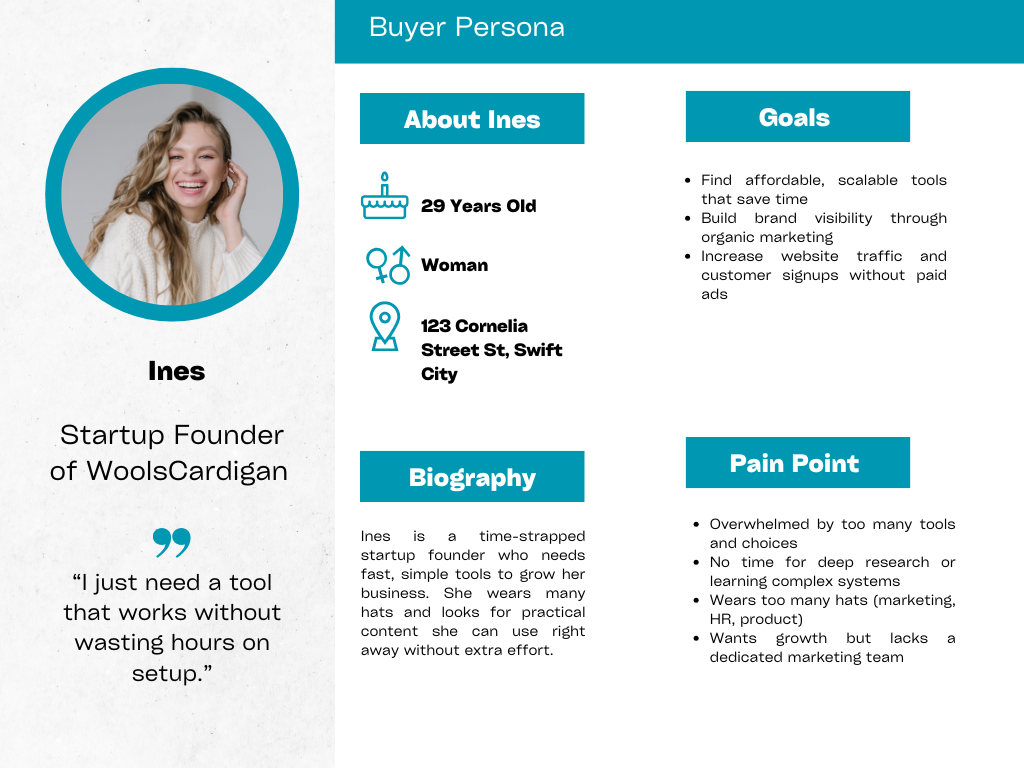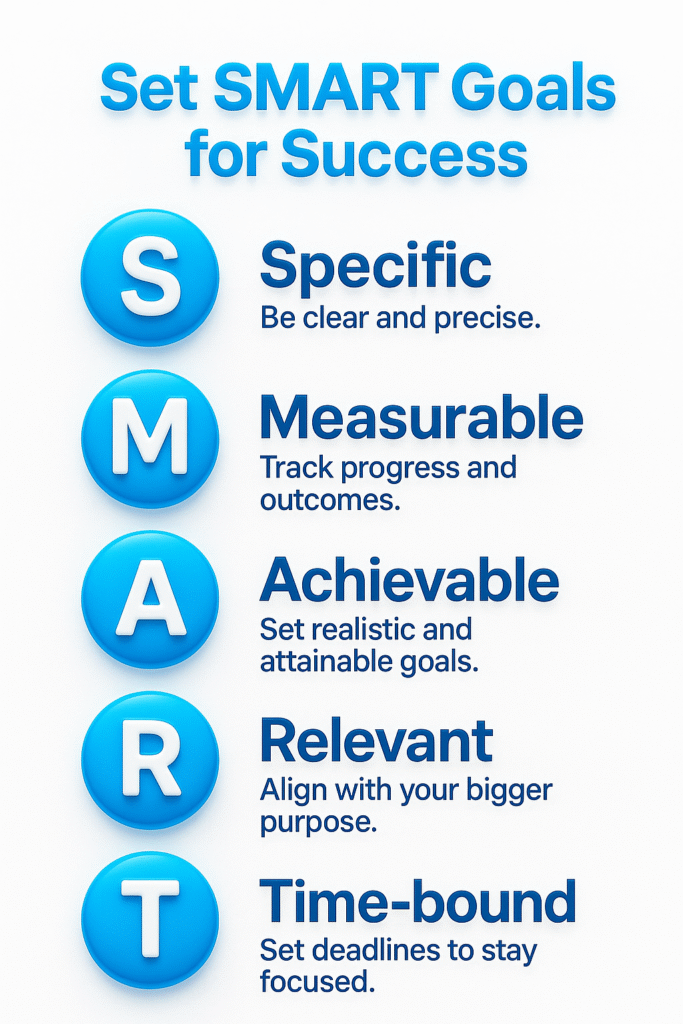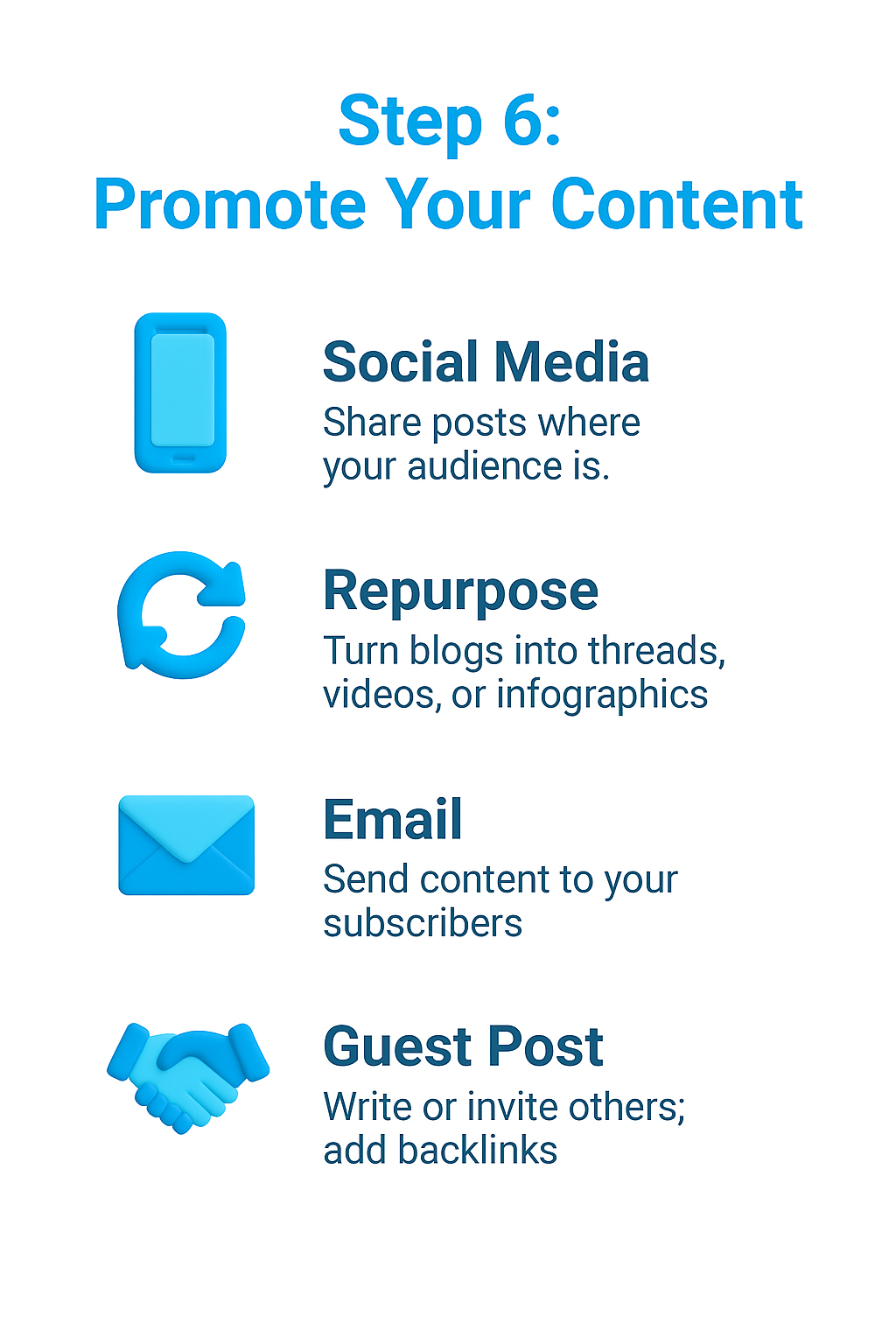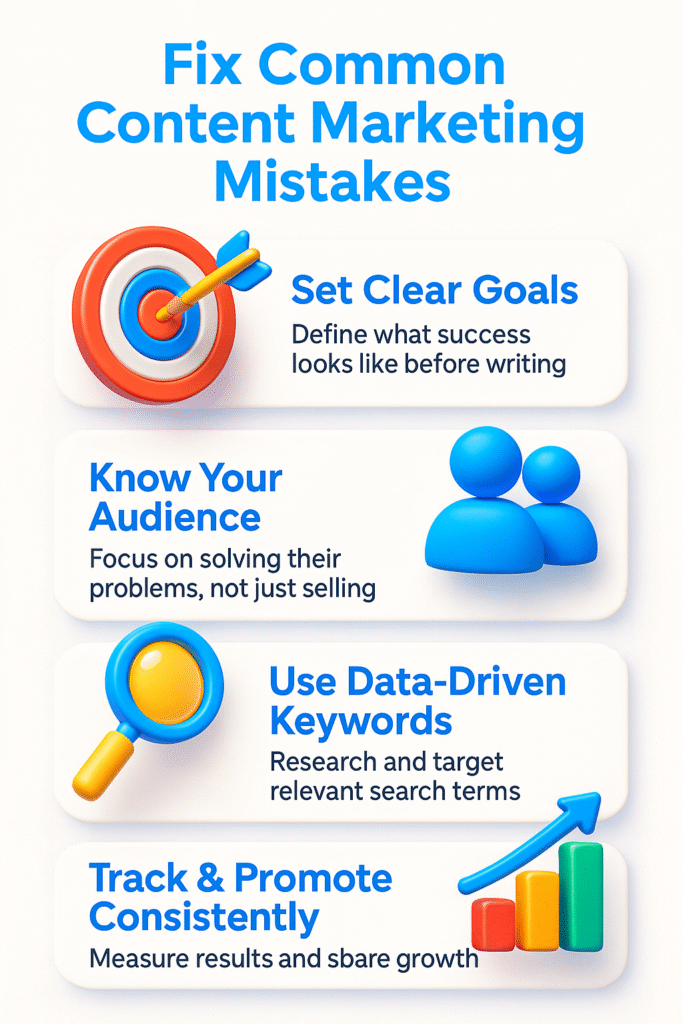
How can distributing content help my startup grow?
Content marketing is the easiest way for early-stage startups can quickly grow without having to spend a lot of money. It helps people find your website, learn about your brand, and trust what you do. Whether you are just starting your business or looking to get your first customer, this guide will give you a clear plan and a head start.
Why Content Marketing Matters for Startups?
Startups need to grow fast, but they often don’t have big budgets. That’s where content marketing comes in. Instead of breaking your budget and spending thousands of dollars on ads, you can easily use content marketing to:
- Get traffic to your website
- Show that your brand is an expert
- Build trust with new visitors
- Help with search engine rankings
- Convert readers into leads or sales
How to Build a Winning Content Marketing Plan for Your Startup
You don’t need to be an expert to get results with content marketing; all you need is a simple plan. Below are five steps every startup should follow to grow with content marketing the smart way.
Step 1: Understand Your Audience Deeply
Before you write anything, know who you’re writing for. The easiest way to understand your audience is to create a buyer persona, which is a simple profile that describes your customers, their challenges, and goals.
Ask yourself these questions:
- Who is my ideal customer?
- What problems are they trying to solve?
- What kind of content do they enjoy (blogs, videos, how-tos)?
Step 2: Creating a buyer persona
To effectively serve your customers, you need to understand their goals and challenges. By identifying their pain points, you can offer targeted solutions through your products or services. These steps allow you to prioritize the customer experience and tailor your approach to meet their specific needs.
For example, if you’re selling a SaaS product called “ContentPilot” – an AI tool that writes and schedules social media content for you. This could be what your buyer persona looks like.

Example of the buyer persona
Step 3: Set Clear and Measurable Goals
Don’t just write blogs and hope for the best. Ask:” What do I want this content to do?” Set SMART goals that are specific, measurable, achievable, relevant, and time-bound. This will help you to stay focused and on track.

Here’s an example of good content marketing goals :
- Get 500 website visitors in 30 days
- Collect 100 emails in 60 days
- Get 10 leads from one free eBook
Step 4: Choose the Right Content Types
Different people engage with different types of content, so it’s important to choose the type of content that not only matches your brand but also the audience’s preferences.
Here are few examples of content types for startups:
Blog posts
- Purpose: Blog posts are best for content related to SEO and giving helpful advice.
- Why it works: Blog content brings long-term traffic from search engines. It helps your audience solve problems, answer questions, and discover your brand without ads.
- Example: “5 free tools every freelancer should use”
eBooks and Guides
- This type of content builds authority and generates leads through email capture.
- Why it works: Longer-form content shows your expertise and gives readers something valuable to take away. You can also use it to grow your email list.
- Example: “Complete guide to building a remote team in 2025”
Free Tools or Templates
- The purpose here is to attract attention and provide quick wins to your audience.
- Why it works: People love freebies, especially when they solve a specific problem.
- Example: “Download our free budget planner spreadsheet”
Videos
- Great for showing how your product works, explaining complex ideas quickly, building emotional connection, and driving engagement.
- Why it works: Video is one of the most engaging formats, which is perfect for product demos and feature highlights.
- example: “ watch how we help startups cut costs by 30%”
Step 5: Create a Simple Content Strategy
Creating great content is one thing, but it’s consistently and strategically publishing that drives real growth. You don’t need fancy software or a full content team to get started. A basic Google sheet or Trello board is enough to stay organized.
Here’s how to create a simple, startup-friendly content strategy that keeps you on track and focused
Write for people first , SEO second
Use tools like Ubersuggest or AnswerThePublic to find keywords. Use them naturally in:
- Titles
- Headers
- Meta descriptions
- First 100 words
- Image ALT text
But don’t overdo it. Write like you’re explaining to a friend.
What it’s for | |
Title | The headline of your content. Make it clear and compelling. |
Format | Choose the content type: blog, video, email, guide etc. |
Target keyword | Helps with SEO. what would someone search to find this? |
Due date | Your publishing deadline. Stay realistic and consistent |
Promotional plan | Where and how you’ll share the content: LinkedIn, email list, Reddit, communities, etc. |
Step 6: Promote Your Content
You can write the best article ever, but no one will see it unless you promote it. Here’s how:
- Social media : Share your posts on LinkedIn, Twitter, Instagram, or Reddit – wherever your audience hangs out.
- Repurpose content: Turn a blog into a LinkedIn thread, an infographic, or a YouTube short. Get more value from the same idea.
- Email It : Send new content to your subscribers. Even a small list is valuable.
- Guest Post & Collaborate : Write for other blogs in your niche or invite experts to contribute to yours. Add backlinks to boost SEO.

Step 7: Track what’s working and what’s not
It’s as simple as that, track what’s working and what’s not. You can use free tools like:
- Google Analytics to track traffic and bounce rates
- Google Search Console to track rankings
- Mailchimp to track email performance
There’s a few things you need to look out for :
- Which blog posts get the most visits?
- What keywords are driving traffic ?
- What content converts into leads?
Example of Content Ideas for Startups
You don’t need to be a pro writer; just focus on value. Here are some high-value content examples:
Type | Idea | Why It Works |
Blog Post | “How to create a business plan in 5 steps” | Solves a big pain point |
Checklist | “Startup Launch checklist 2025” | Easy to follow , highly shareable |
Video | “Why 90% of startups fail (and how to avoid it)” | Bold headline, educational |
Tool | “Free business name generator” | Brings repeat traffic, lead gen |
Case Study | “How we helped a founder grow to &10K MRR in 6 months” | Builds trust |
Mistakes to Avoid When It Comes to Content Marketing
Even smart founders fall into these traps:
- Writing without a goal
- Focusing only on the product, not the audience problems
- Skipping keyword research
- Forgetting to promote
- Ignoring performance data
Avoiding these mistakes can put you ahead of 80% of your competitors.

Learn Content Marketing Faster with aboveA Academy
If you’re feeling stuck or short on time, you’re not alone. That’s where aboveA Academy comes in. We offer practical, beginner-friendly lessons built for busy founders like you. Whether you’re just getting started with blog posts, lead magnets, or SEO, our short, actionable course gives you the tools to start strong without the overwhelm.
Why founders love aboveA:
- Bite-sized lessons you can watch during lunch
- Real-world templates and tools you can apply right away
- Built specifically for early startups and solo marketers
Instead of trying to figure it all out on your own, let us help you build a smart content strategy step by step so you can grow faster with less guesswork.
Visit aboveA Academy to explore courses and get started today.
Final Thoughts
Content marketing starts slow , but it builds up quickly and leads to big results. The more value you share, the more trust and traffic you’ll earn. Start simple, one solid blog a week, one lead magnet a quarter. Stay consistent, build momentum and you’ll see real results.
Meet the Author

Teerisra Donlunwad
She is our talented content marketing specialist from Thailand. Currently in her senior year studying marketing, she supports projects like the aboveA Academy and weekly TikTok content. Her creativity and dedication shine through each video, making her a key team member driving fresh, engaging content every week.

